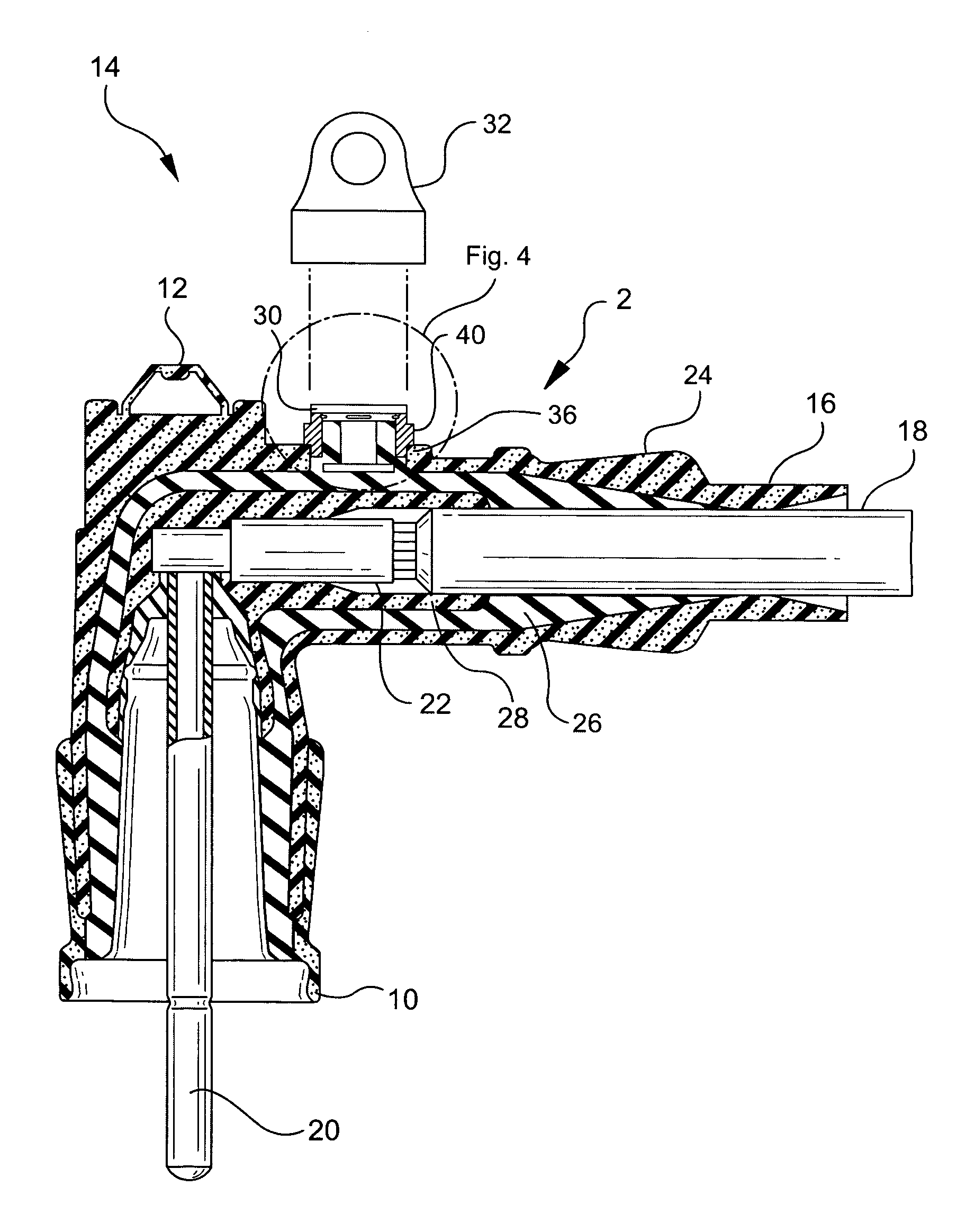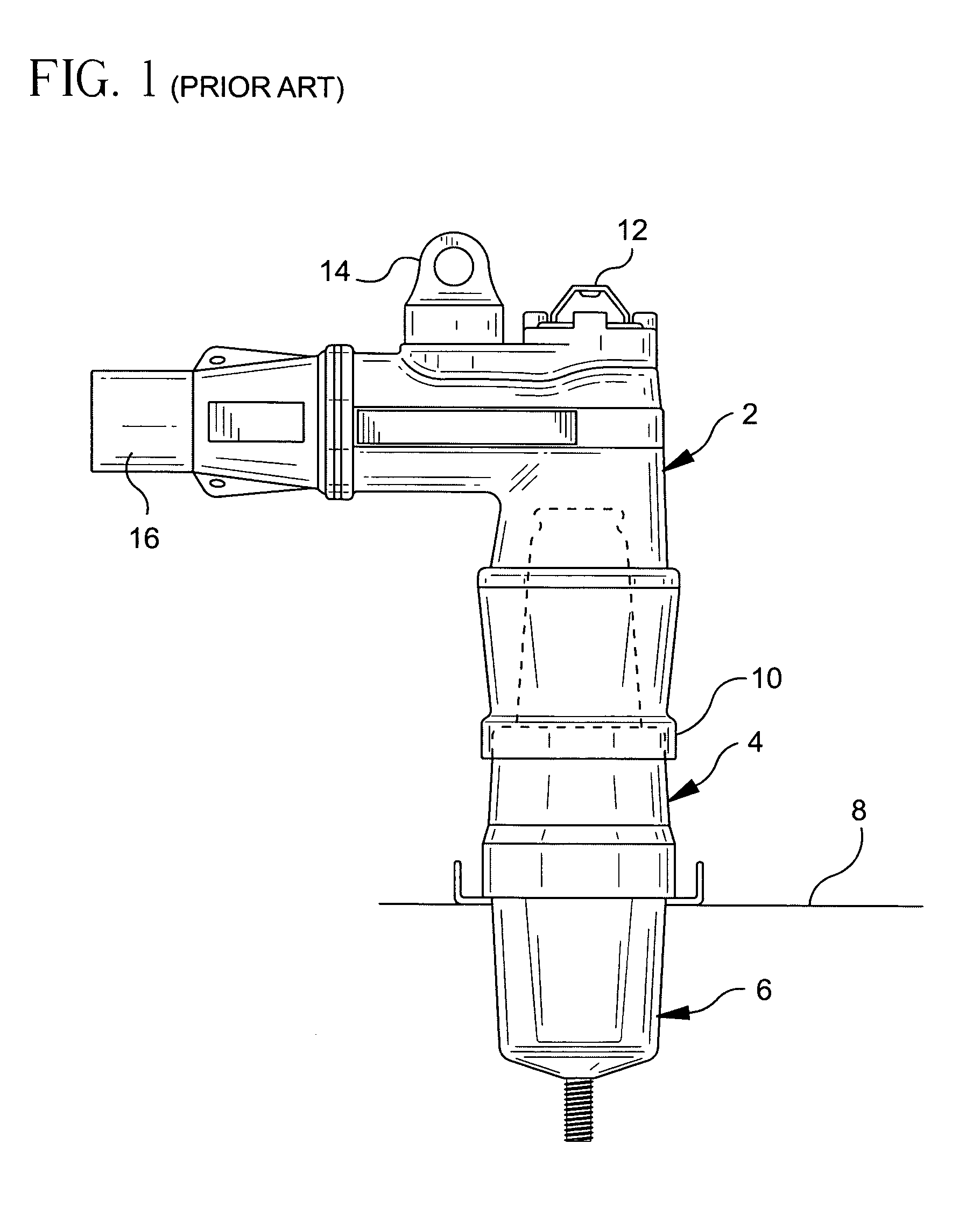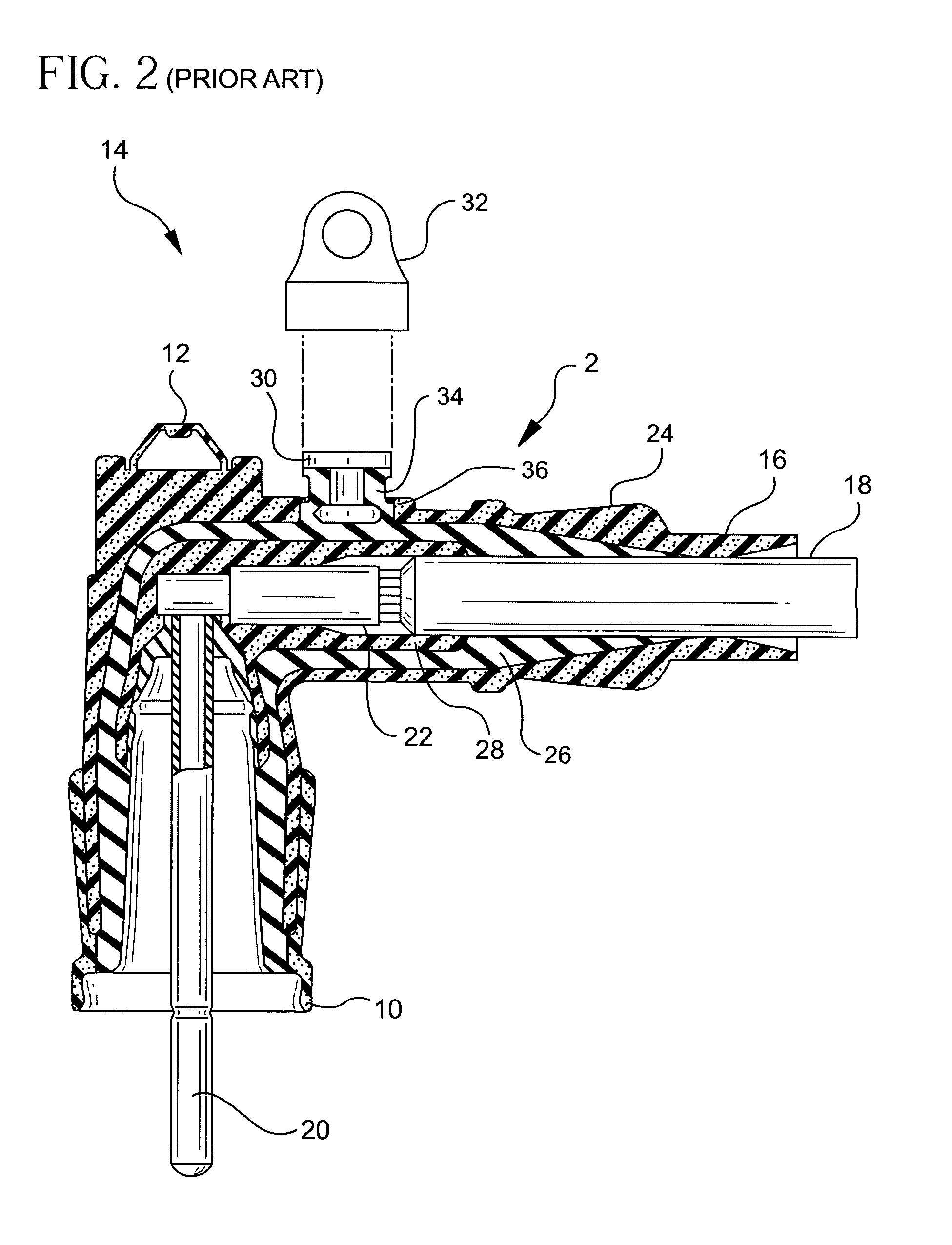Method for forming an electrical connector with voltage detection point insulation shield
a technology of voltage detection point and insulation shield, which is applied in the direction of electrical connection base, connection contact member material, coupling device connection, etc., can solve the problems of service personnel often encountering difficulty in reliably determining whether, obvious safety hazards, and electrical shock hazards, etc., to reduce the possibility of contamination and irregularities, and reduce the wear and cleaning of mold tools
- Summary
- Abstract
- Description
- Claims
- Application Information
AI Technical Summary
Benefits of technology
Problems solved by technology
Method used
Image
Examples
Embodiment Construction
[0029]Referring first to FIGS. 1 and 2, prior art loadbreak connectors are illustrated. In FIG. 1, a power cable elbow connector 2 is illustrated coupled to a loadbreak bushing insert 4, which is seated in a universal bushing well 6. The bushing well 6 is seated on an apparatus face plate 8. The power cable elbow connector 2 includes a first end adapted for receiving a loadbreak bushing insert 4 and having a flange or elbow cuff 10 surrounding the open receiving end thereof. A power cable receiving end 16 is provided at the opposite end of the power cable elbow connector and a conductive member extends from the power cable receiving end to the bushing insert receiving end 10 for connection to a probe insertion end of the bushing insert.
[0030]FIG. 2 is a cross-sectional view of a prior art power cable elbow connector 2, which includes a cable receiving end 16 having a cable 18 therein. The other end of the power cable elbow is a loadbreak bushing insert receiving end 10 having a prob...
PUM
| Property | Measurement | Unit |
|---|---|---|
| conductive | aaaaa | aaaaa |
| voltage detection test | aaaaa | aaaaa |
| voltage | aaaaa | aaaaa |
Abstract
Description
Claims
Application Information
 Login to View More
Login to View More - R&D
- Intellectual Property
- Life Sciences
- Materials
- Tech Scout
- Unparalleled Data Quality
- Higher Quality Content
- 60% Fewer Hallucinations
Browse by: Latest US Patents, China's latest patents, Technical Efficacy Thesaurus, Application Domain, Technology Topic, Popular Technical Reports.
© 2025 PatSnap. All rights reserved.Legal|Privacy policy|Modern Slavery Act Transparency Statement|Sitemap|About US| Contact US: help@patsnap.com



